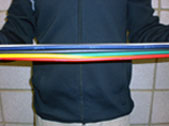|
PT Classroom - Understanding the Resistive Properties of Thera-Band Tubing ׀ by Chai Rasavong, MPT, MBA |
|
Thera-Band tubing is often utilized for therapeutic exercise
both in the physical therapy setting and in a patient’s home
for incorporation into a home exercise program. Therapists
utilize Thera-Band tubing because it is low cost, portable,
versatile and doesn’t rely on gravity for resistance (1).
Thera-band tubing comes in seven colors and resistive
properties are coded by color of tubing. Given its
popularity, therapists are aware of the resistive properties
of the tubing based on color but may be unaware of the exact
resistance or force which is produced by utilizing the
tubing.
REFERENCES |
|
|
|
|







